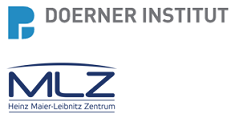Speakers
Description
The excellent craftsmanship of Oriental and Central Asian textile dyers has been renowned since ancient times. It has been suggested by experimental archaeologists that superior color brilliance and persistence are based on the use of an elaborate fermentation procedure prior to dyeing. Fermentation of sheep wool with G. candidum yeast leads to decomposition of the fatty acid interlayers between cuticle scales resulting in a characteristic abduction of the outermost scale layers. Furthermore, G. candidum actively regulates the pH of the surrounding medium to 4.4. This leads to a saturation of cysteic acid groups in the cuticle that are able to trap metal ions and metal-organic compounds at neutral or basic conditions. Both effects of fermentation contribute to an increased and deeper penetration of metal-organic pigment complexes into the wool fibers, resulting in better persistence of the coloration against bleaching or leaching. The characteristic scale abduction in fermented wool can be identified by scanning electron microscopy (SEM). However, the outermost scale layers will fall off by abrasion over time. In consequence, SEM is usually not capable to detect fermentation in ancient or intensely used textiles.[1]
We have addressed this issue by using X-ray fluorescence microscopy (µ-XRF) to detect the distribution of highly common metal-organic pigments within individual fibers of the investigated specimens with single digit µm-resolution.[1,2]
µ-XRF mapping enables us to identify differences in the distribution of pigments along the cross-section of fermented vs. not fermented wool fibers. After this approach had been established on recently prepared specimens with known fabrication procedure, we have detected the influence of fermentation in several ancient specimens, including the “Pazyryk carpet”, the by far oldest known pile carpet in the world. These results link the fermentation technique with Central Asian nomad cultures such as Saka and Scythians. Further studies on specimens from various decades help to establish a database on coloration techniques for are larger variety of cultures and periods.
[1] A. Späth et al., Sci. Rep. 11, 5141, 2021
[2] M. Meyer et al., Scanning 2017, 6346212, 2017

